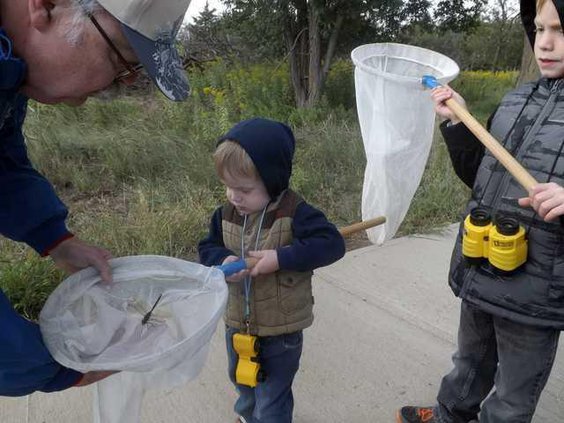Oh, the scavenger hunt – many of us have fond memories of days at summer camps, racing around with your team, trying to find everything on your list. It’s almost a traditional part of American childhood. We do our fair share of scavenger hunts here at the Kansas Wetlands Education Center, and it never fails to amaze us how excited kids are by the simple act of checking off items from a list. From the KWEC exhibit hall to our nature trail, we’re always ready to kick off a scavenger hunt.
Surprisingly, the history of the scavenger hunt is more high-brow than today’s summer camp excursions. Nobody’s sure who invented the game, but Hollywood gossip columnist Elsa Maxwell gets the credit for making them popular at high society parties in the 1930’s. Her first scavenger hunt took place in Paris, and when she moved the parties across the pond to New York, the scavenger hunt became a serious craze. Some of those early scavenger hunts included items like stealing mustache hairs from Kermit Roosevelt (son of Theodore Roosevelt) and picking fights with policemen.
Modern versions of the scavenger hunt are thankfully more law-abiding in their requirements. There are several large scavenger hunts that take place each year. Some happen on college campuses like the University of Chicago Scavenger Hunt, which has been going on annually for nearly 30 years. There’s also the annual “Greatest International Scavenger Hunt the World Has Ever Seen” or GISHWHES, the brain child of actor Misha Collins, which began in 2011 and currently holds the Guinness World Record with 14,580 participants from 69 countries.
A scavenger hunt doesn’t have to be a huge international affair to be a fun time for the whole family. There are a ton of great options for creating your own scavenger hunt lists. If you’re taking a family trip to a wildlife refuge, you could look for specific types of animals or plants. Searching for types of plants like trees, bushes, grasses, or flowers is simple enough for the smallest children. Older children can search for more detailed objects, like specific types of seeds or the parts of flowers.
There are opportunities to create indoor scavenger hunts as well – here at the KWEC, our exhibit hall scavenger hunt encourages kids to slow down and read our informative signs, and look closely at several different displays. Museums, nature centers, and state and national parks all over the country have scavenger hunts that help families get the most out of their visit. It’s usually as simple as asking at the front desk!
Whether you’re indoors or outside, at home or on the road, a scavenger hunt can be as simple or as complicated as you want it to be. They’re great for reinforcing classroom learning, and they help kids develop their observational skills while they have fun. On your next trip to Cheyenne Bottoms and the KWEC, make sure to ask about our free scavenger hunts – we’ll help you get started on a great time making memories while you explore and learn!
Wetland Explorer: Searching for Fun





